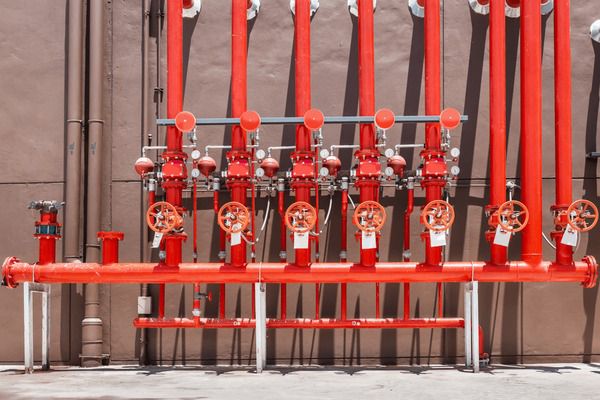
Indonesia, a rapidly urbanizing country with a growing construction industry, faces a crucial need for robust fire protection systems to ensure the safety of its buildings and occupants. The increasing density of its cities, along with a tropical climate that promotes high humidity and heat, makes fire hazards a real concern. Building fire protection systems in Indonesia are vital for minimizing fire risks, safeguarding human life, and reducing property damage. This article explores the key aspects of fire protection systems in Indonesia, including regulations, system components, challenges, and future trends.
Fire Safety Regulations in Indonesia
Fire protection in Indonesia is governed by several national standards and regulations. The Indonesian National Standard (SNI), particularly SNI 03-3985-2000, provides guidelines on fire protection system designs and their implementation in buildings. These regulations ensure that buildings—especially high-rise structures—are equipped with fire protection systems to prevent, detect, and manage fires.
Some of the key regulatory requirements for fire protection systems in Indonesia include:
- SNI 03-1736-2000: Fire Safety Design Standards for Buildings
- SNI 03-1746-2000: Installation of Fire Alarm and Automatic Fire Suppression System
- Perda DKI Jakarta No. 8 Tahun 2008: Local fire safety regulations applicable in Jakarta and some other regions.
Developers, architects, and engineers must comply with these standards to meet the requirements of local fire safety authorities.
Key Components of Fire Protection Systems
A comprehensive fire protection system includes both active and passive fire protection measures. These systems are essential for detecting and suppressing fires and for ensuring building occupants have sufficient time to evacuate.
- Active Fire Protection Systems
Active fire protection involves systems that actively engage when a fire occurs. Common components of active systems include:- Fire Detection and Alarm Systems: Fire alarms, smoke detectors, and heat sensors form the backbone of early fire detection. These systems trigger alerts that can prompt building occupants to evacuate immediately.
- Sprinkler Systems: Automatic sprinklers are essential for containing and suppressing fires. Indonesia’s regulations require sprinklers in many types of commercial and high-rise buildings.
- Fire Extinguishers: Portable fire extinguishers provide a first line of defense against small fires. Their placement and type are regulated to ensure optimal coverage.
- Fire Suppression Systems: These include specialized systems such as gas-based suppression systems (e.g., FM-200) or foam-based systems, often used in data centers, commercial kitchens, and sensitive electrical areas.
- Passive Fire Protection Systems
Passive fire protection focuses on building elements that prevent the spread of fire and provide structural integrity. These systems include:- Fire-Resistant Materials: Walls, floors, and ceilings made from fire-resistant materials (such as concrete, fire-rated drywall, and insulation) help to compartmentalize a building and prevent the spread of fire and smoke.
- Fire Doors and Firestops: Fire-rated doors and other barriers block fire from spreading between rooms or floors, giving people more time to evacuate safely.
- Emergency Exits and Evacuation Routes: These include clearly marked fire exits and stairwells, which must meet certain width and clearance standards to facilitate safe evacuations.
Challenges in Fire Protection Systems in Indonesia
Despite regulatory frameworks, implementing effective fire protection systems in Indonesia faces several challenges:
- Compliance and Enforcement: While regulations exist, ensuring that all buildings comply with fire safety standards is an ongoing challenge. Older buildings often do not meet modern standards, and compliance may vary between regions.
- Urban Density: Indonesia’s rapidly growing cities, such as Jakarta, Surabaya, and Bandung, have increasingly dense urban areas, making fire risk management more complex. High population density can lead to slower evacuations and greater potential for loss of life in the event of a fire.
- Public Awareness: There is a need for greater public awareness and education regarding fire safety procedures and fire protection systems. Many individuals are not familiar with fire drills or how to respond in case of fire emergencies.
- Maintenance and Inspection: Regular maintenance and inspection of fire protection systems are essential to ensure their functionality. However, improper maintenance, especially in smaller residential or commercial buildings, can compromise safety.
Future Trends and Opportunities
As Indonesia continues to develop, there is increasing interest in advanced technologies and integrated fire protection solutions. Several trends are shaping the future of fire protection in the country:
- Smart Fire Detection Systems: Integration of smart technologies such as IoT (Internet of Things) sensors can enhance fire detection and provide real-time alerts, even to remote monitoring systems. These systems enable quicker response times and better coordination with fire departments.
- Green Buildings and Fire Protection: With the rise of environmentally sustainable construction, fire protection systems are being designed to be energy-efficient. Water-efficient sprinkler systems and eco-friendly suppression agents are becoming more common.
- Fire Safety Training: More companies and building managers are recognizing the importance of regular fire drills and safety training for staff and tenants. This is critical for ensuring a prompt and organized response to fire incidents.
Conclusion
Fire protection systems are an essential aspect of modern building design in Indonesia. By combining active and passive measures, along with strict adherence to regulations, the country can ensure safer living and working environments. However, continued efforts are needed in enforcement, public education, and the adoption of advanced technologies to address the ongoing challenges of fire safety in Indonesia’s growing urban landscape. Building developers and property managers must prioritize fire protection systems to safeguard lives and properties effectively.

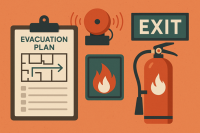
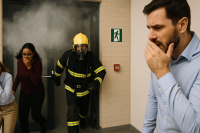
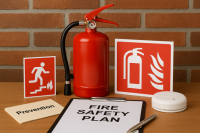
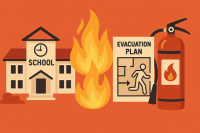
Leave A Comment